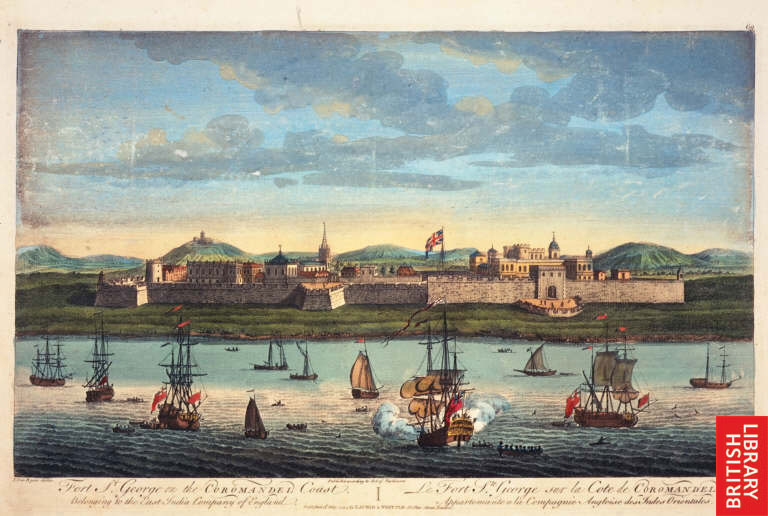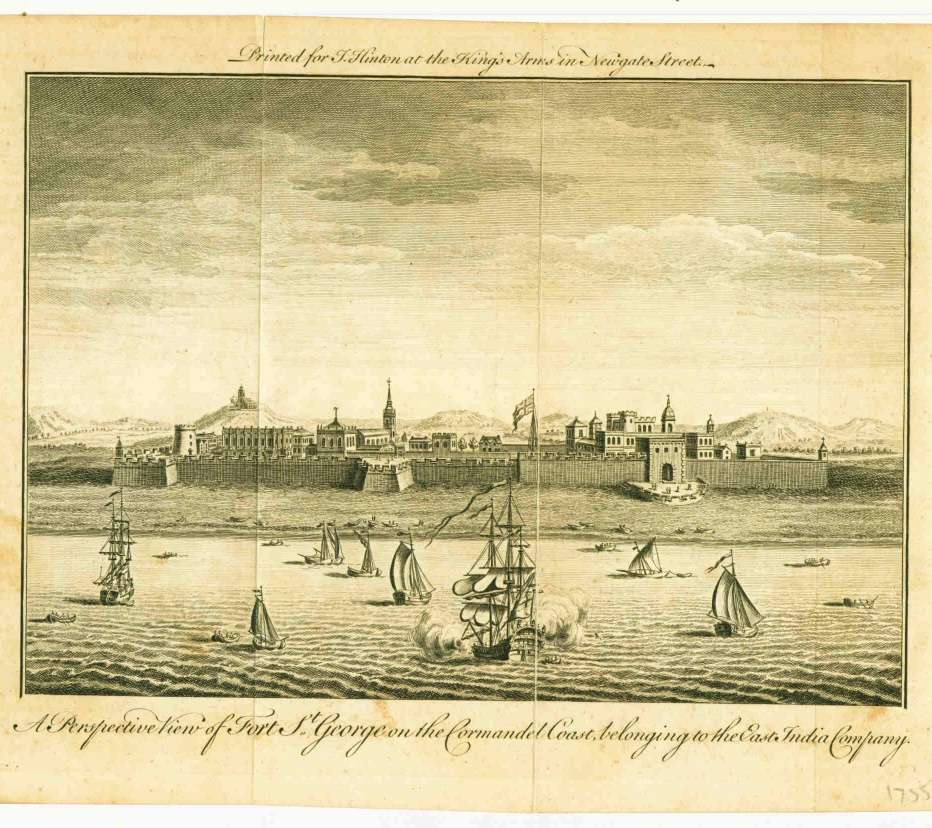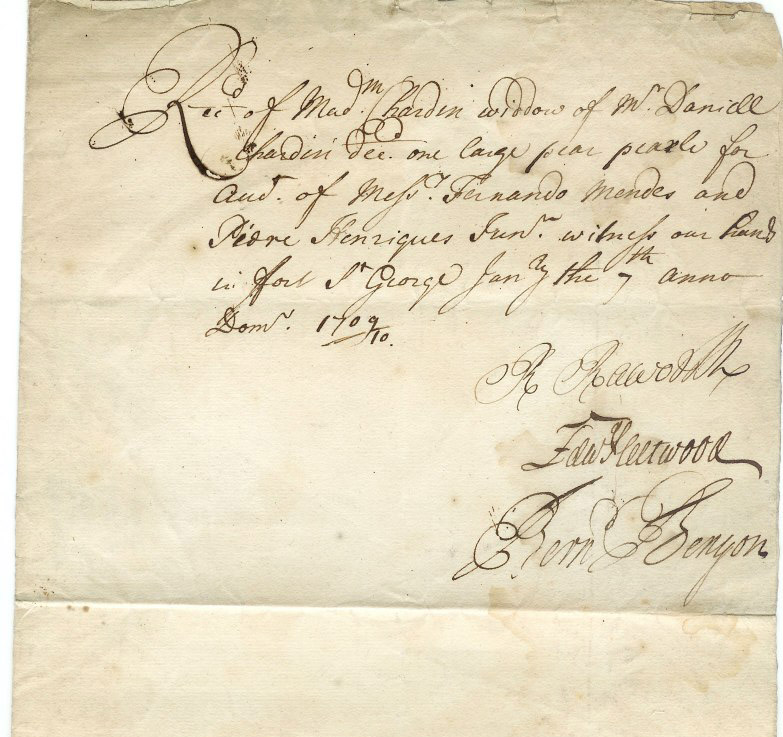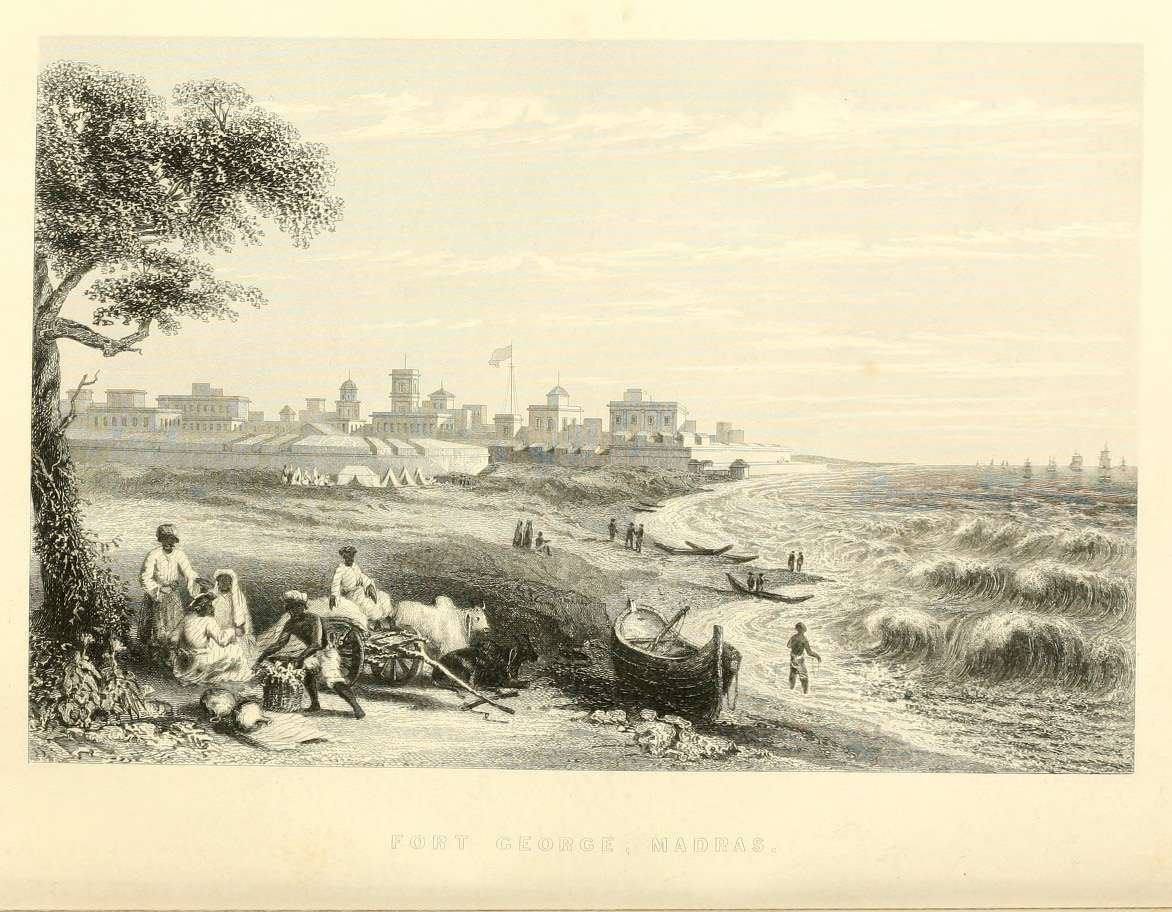



Mme Daniel Chardin's pear pearl received for auction at Fort St. George, 1709
Source: Private collection of Mr. Jean Fathi of Toronto, Canada
From the Google cache of The Hindu: (April 2003):
FEW REALISE that the Corporation of Madras is the oldest in India, indeed in any part of the Commonwealth outside the U.K. Fewer still take pride in that fact. Amongst the few interested in the history of Madras, most credit Governor Elihu Yale with being the founder of the Corporation. In fact, the corporation was founded, it would appear, to clip his wings. Created by a Royal Charter issued on December 30, 1687 by King James II, the corporation was really the brainchild of the chairman of the East India Company, Sir Josiah Child, and when Governor Yale carried out Child's instructions, it was one of the few times this domineering personality implemented an order from 'head office'.Before the creation of the corporation, the company's agent/president/Governor ministered to the needs of the population of Fort and Town with the assistance, in the 1650s, of an Adhikari (headman), Kanakkapulle (accountant) and Pedda Nayak (head of watch and ward). The Governor, assisted by the Kanakkapulle, sat as Madraspatnam's Justice of Peace. And governor Streynsham Master (1678-81) went on to introduce taxes and licence fees. Complications arising out of these cesses and the growing expenses of a growing town led to Sir Josiah drawing up plans for a more formal body of civic administration.
The corporation was inaugurated with due solemnity on September 29, 1688, when the Mayor, Aldermen and Burgesses took their oaths. It was around three that afternoon that "the Worshipful Mayor" and his 12 aldermen in scarlet serge robes marched to the Town Hall behind two European sergeants carrying the silver maces of office. The Aldermen were followed by the 29 Burgesses in white China-silk robes. The Town Hall was a long building just South of St. Mary's Church in the Fort and is today the Tamil Nadu-Kerala area headquarters of the Army.
The company broad-mindedly nominated to the first Corporation of Madras a truly multi-racial representation: "Nathaniel Higginson, Second of Our Council of Fort St. George, (as) the First and Modern (current) Mayor of the said corporation... (and) John Littlton, Thomas Wavell and William Fraser, three of Our Council of Fort St. George; Daniel Chardin, French Merchant; Lucas Lewis de Oliveria and Alvaro Capella de Valle, Portugal Merchants; Bartholomew Rodriguez, Jaques de Paiva and Domingo de Porte, Hebrew Merchants; Chinna Vencatadre, Mooda Verona and Allingall Pella (Pillai), Gentu Merchants; to be the Twelve First and Modern Aldermen". Chinna Venkatdri was the youngest brother of Beri Thimmappa. Twenty-nine free merchants were nominated as the Burgesses. The Mayor, who was to hold office for one year, was to be elected by the Aldermen, who were nominated for life. The Burgesses, who were never to exceed 120, were to elect one of their number to fill any vacancy that might arise among the Aldermen.
The whole process of inducting a Mayor grew more exotic as the years went by. In 1727, the order of procession was:
"Major John Roach on horseback at the head of a company of Foot Soldiers, with Kettle drum, Trumpets and other music; The Dancing girls with the Country Music; the Pedda Naigue on horseback at the head of Peons; The Marshall with his Staff, on horseback; The old mayor on the right hand and the New on the left; The Aldermen, two on two, all on horseback; Six halberdiers; The Company's Chief Peon on horseback, with his Peons; The Sheriff with a white Wand, on Horseback; and The Chief Gentry in the Town, on horseback".Changes in the organisation of the Corporation were inevitable over the years, not only due to the changing character of the city but also of governance. By 1856, the duties of the Corporation became more clearly defined and it began to act more purposefully. In 1919, the Aldermen who had, in course of time, become Commissioners were re-designated as Councillors, the term that survives. That year Madras got its first Indian head of the Corporation; P. Theagaraya Chetty was designated as President, the term `Mayor' having passed into history some years earlier. The office of Mayor was however re-created in 1933 and Kumararajah M.A. Muthiah Chettiar made the transition from last President to first new Mayor - and the mayoralty has remained thereafter. Tara Cherian of the Corporation of Madras was to assume office as its first woman Mayor - and India's first too.

Source: http://www.archive.org/details/indianempirehist03martuoft
(downloaded Jan. 2009)
== Indian Routes index == Indian Routes sitemap == Glossary == FWP's main page ==